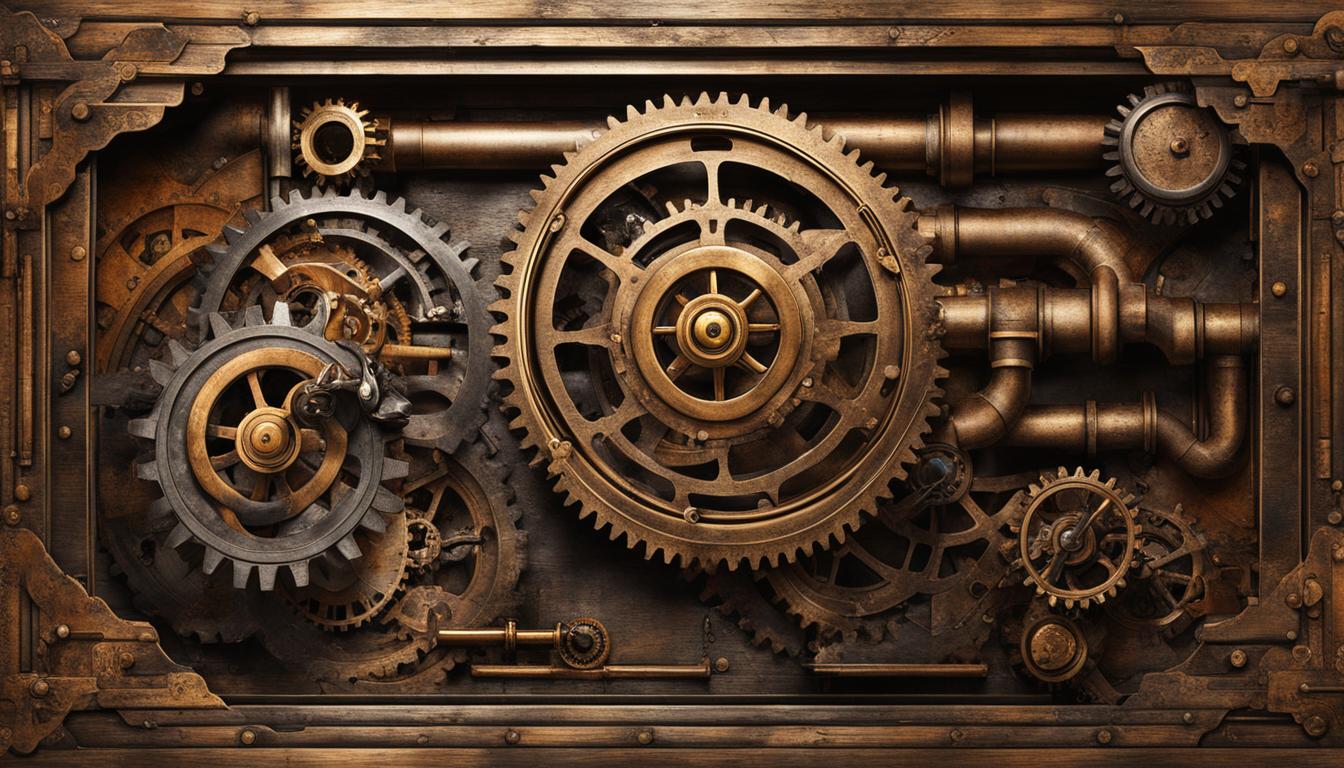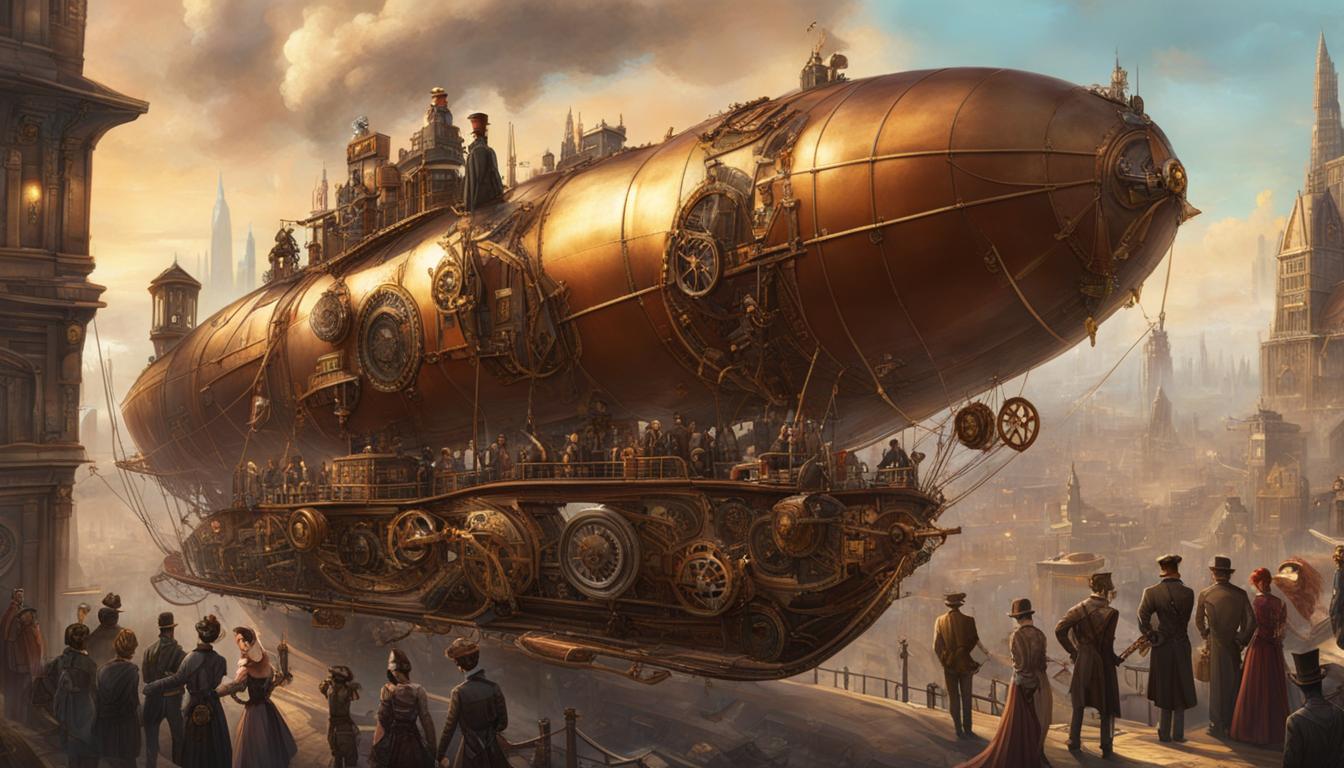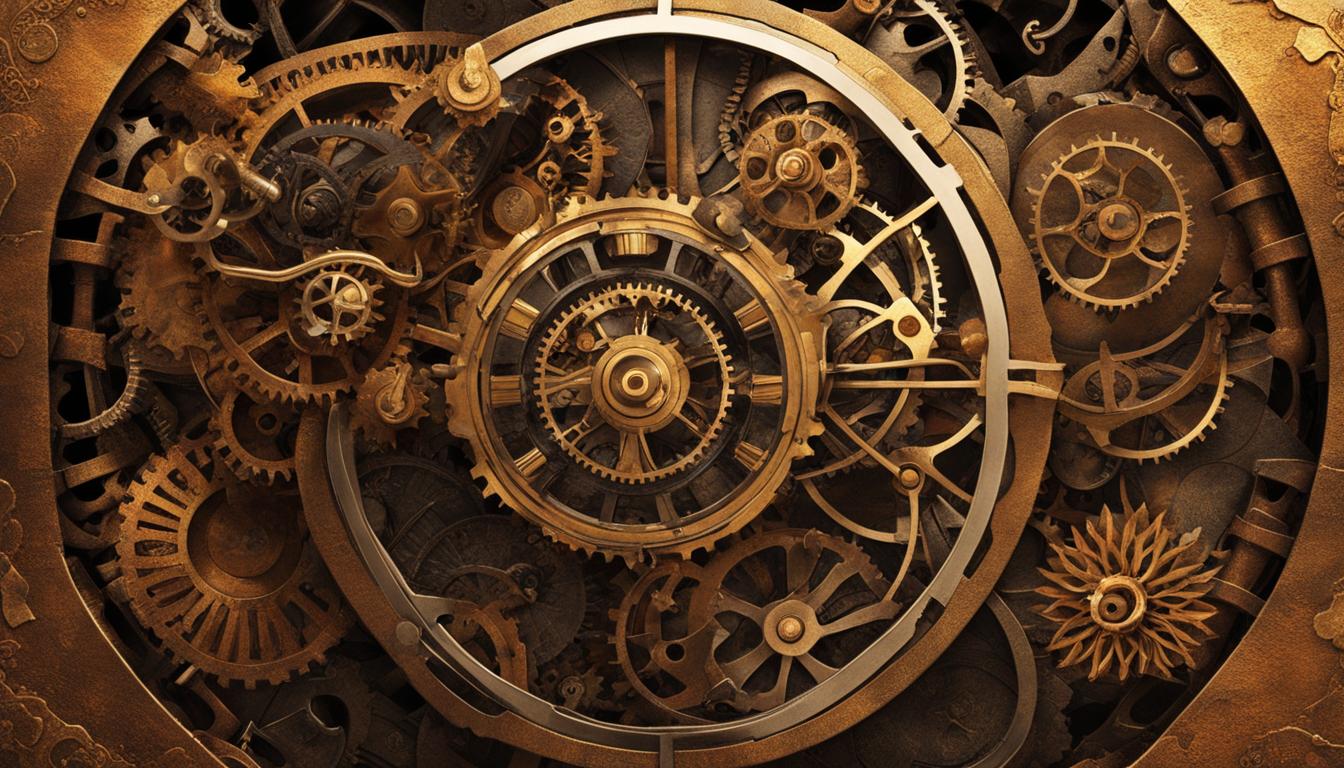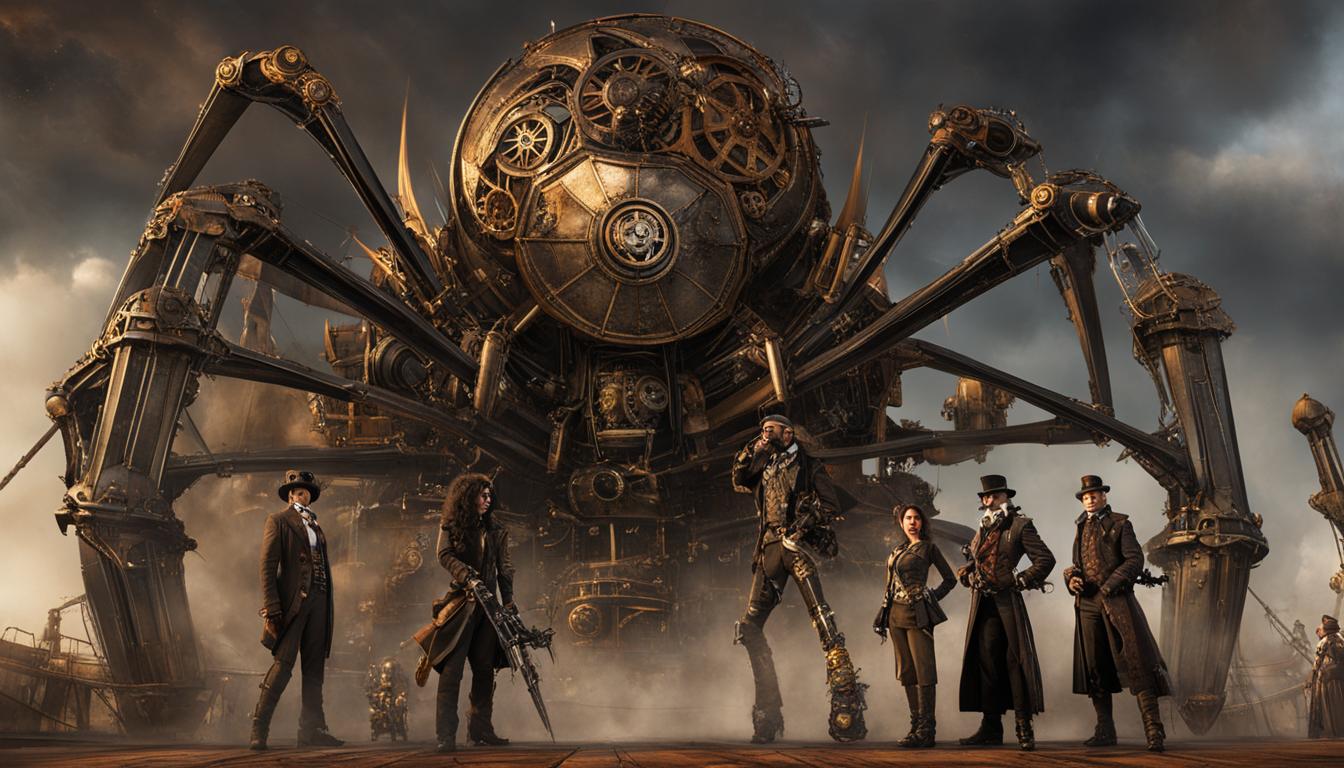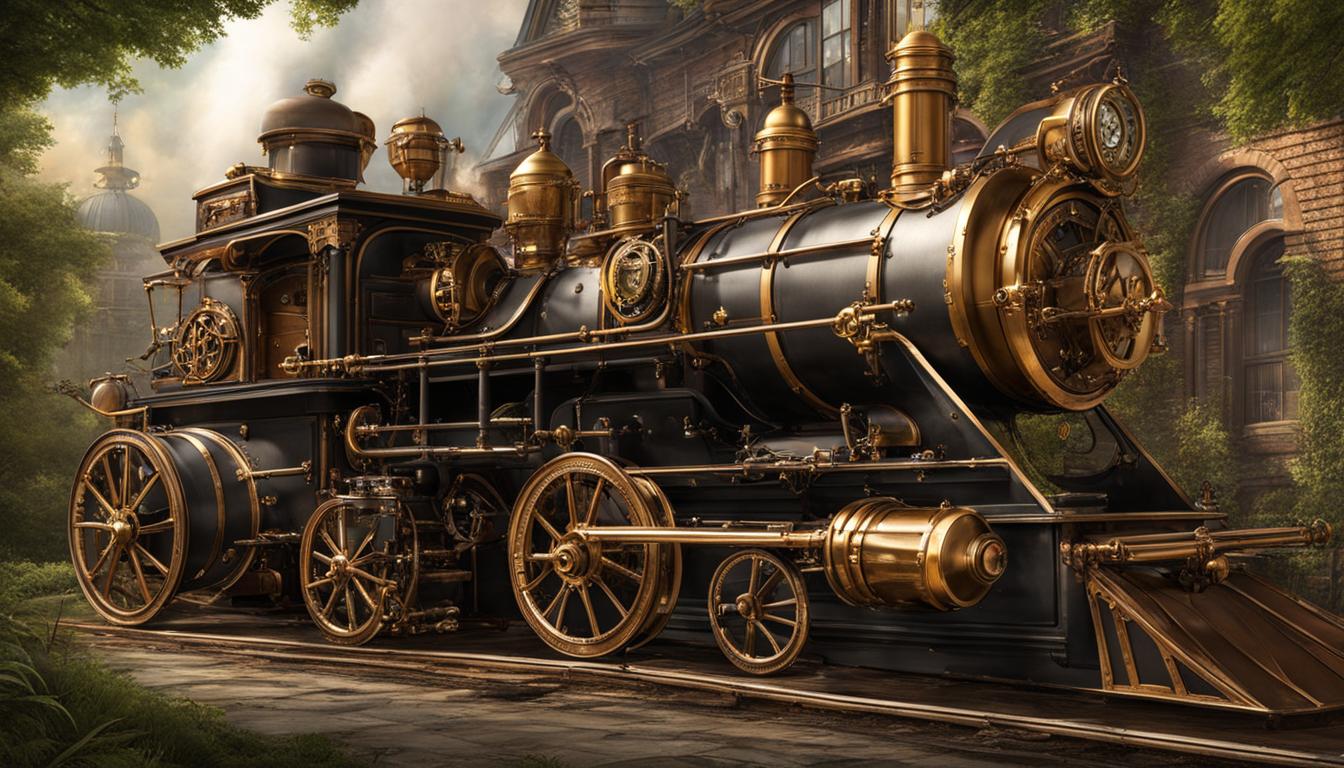Steampunk, with its wit, mysteries, and contraptions, has played a vital role in shaping literary history. What began as a visual iconography in film, television, and music videos has evolved into a vast genre of literature. Steampunk literature explores various subgenres, including alternate histories, social commentary, graphic novels, and even erotica. It has expanded beyond literature, infiltrating music and conventions. Notably, the French have embraced steampunk, boasting a thriving community and a theme park dedicated to the genre. Steampunk can be seen as a literary trope, a DIY craft, and a fashion statement. Critics may dismiss it as a fleeting trend, but steampunk’s shrewd juxtapositions of historical contexts with speculative technologies serve as “ethical spectacles” that represent resistance and transgression. Writers like William Gibson and China Miéville have made significant contributions to steampunk’s literary canon, solidifying its place in history.
Key Takeaways:
- Steampunk has made a significant impact on literary history through its wit, mysteries, and contraptions.
- Steampunk literature encompasses various subgenres, including alternate histories, social commentary, graphic novels, and erotica.
- The genre has expanded beyond literature into music and conventions.
- The French have a thriving steampunk community, including a theme park dedicated to the genre.
- Some critics dismiss steampunk as a fleeting trend, but its shrewd juxtapositions of historical contexts with speculative technologies represent resistance and transgression.
Steampunk’s Place in the Literary Canon
To truly understand the importance of steampunk literature, one must delve into its literary canon. Notable authors such as Cherie Priest have made significant contributions to the genre, crafting stories that blend historical contexts with speculative or adapted technologies. Their works not only entertain readers but also offer insightful commentary on societal issues and human nature.
Steampunk’s place in the literary canon is further solidified by the presence of renowned authors like William Gibson and China Miéville. Their contributions to the genre have expanded the boundaries of steampunk literature, pushing it beyond its initial roots. Through their storytelling and world-building, these authors have showcased the significance of steampunk as a literary genre that captivates readers with its unique blend of history, technology, and imagination.
| Key Steampunk Authors | Literary Works |
|---|---|
| Cherie Priest | Boneshaker |
| William Gibson | The Difference Engine |
| China Miéville | Perdido Street Station |
Steampunk’s Aesthetics and Themes
Steampunk is more than just a genre; it is a visual feast for the senses. Its distinctive aesthetic draws heavily from the Victorian era, with its intricate brass gadgets, gears, and steam-powered machinery. The visual cues of steampunk transport readers to an alternate reality, evoking the Industrial Revolution and the technological advancements of the 19th century. It is a world where steam-powered airships soar through the skies, clockwork automatons roam the streets, and mad scientists create fantastical inventions.
But steampunk is not just about the visuals; it delves into profound themes that resonate with readers. Alternate history is a common thread in steampunk literature, where authors reimagine historical events and explore what could have been. By blending historical contexts with speculative or adapted technologies, steampunk authors create immersive narratives that captivate readers’ imaginations. These stories often serve as a lens through which to examine societal issues and critique the relationship between technology and humanity.
Steampunk literature combines the elegance of the past with the possibilities of the future, creating a unique and captivating fusion that has captured the hearts of readers worldwide.
Classic steampunk literary works like “The Difference Engine” by William Gibson and Bruce Sterling and “Perdido Street Station” by China Miéville have left an indelible mark on the genre. These books exemplify the intricate world-building and thought-provoking storytelling that steampunk is known for. They invite readers to explore richly detailed worlds where technology and imagination intertwine.
| Classic Steampunk Literary Works | Authors |
|---|---|
| “The Difference Engine” | William Gibson and Bruce Sterling |
| “Perdido Street Station” | China Miéville |
Steampunk’s influence on modern literature cannot be overstated. Its unique blend of history, technology, and aesthetics has inspired a new generation of authors to explore the possibilities of this genre. As the genre continues to evolve, it remains a source of inspiration and fascination, pushing the boundaries of what literature can be.
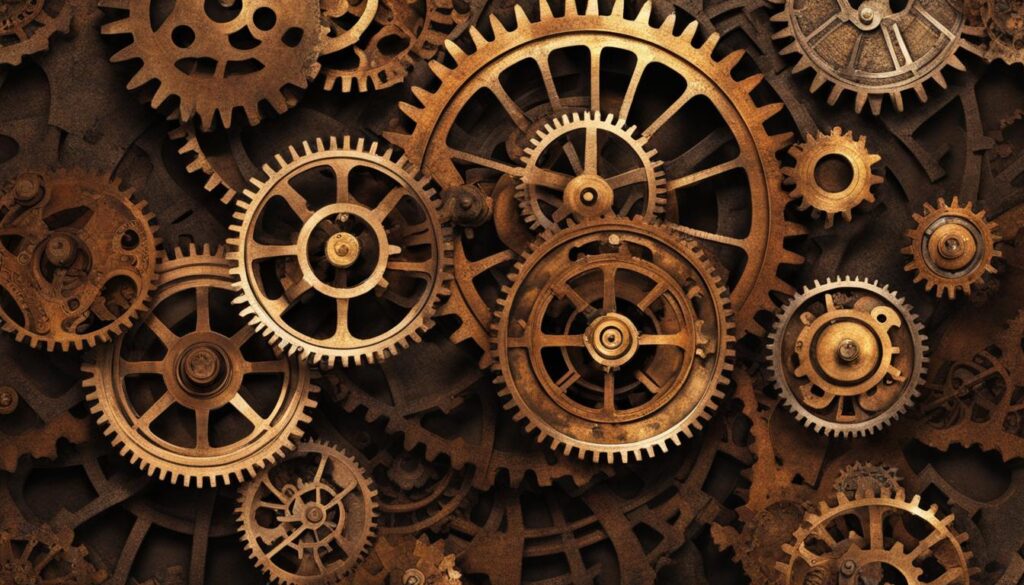
Steampunk’s Literary Impact
| Author | Notable Works |
|---|---|
| William Gibson | “The Difference Engine” |
| China Miéville | “Perdido Street Station” |
| Cherie Priest | “Boneshaker” |
The literary impact of steampunk is evident in the works of notable authors like William Gibson, China Miéville, and Cherie Priest. Their contributions to the genre have solidified steampunk’s place in literary history and influenced the development of the genre as a whole. Through their stories, they have expanded the boundaries of steampunk, weaving together elements of history, technology, and imagination to create compelling narratives that captivate readers.
As steampunk continues to evolve and inspire, its influence on modern literature is undeniable. Its blend of history, speculative technology, and thematic depth has not only shaped the literary landscape but also sparked discussions about the role of imagination and creativity in society. Steampunk’s journey from a literary genre to a form of protest and a thriving subculture showcases the power of storytelling to challenge the status quo and inspire innovation.
Writing Steampunk and Creating a Steampunk World
Writing steampunk is a creative endeavor that requires a careful balance of imagination, historical research, and attention to detail. To create a believable steampunk world, authors must immerse themselves in the Victorian era or an alternative version of it. This involves delving into the history, fashion, and technology of the time, allowing them to bring an authentic sense of realism to their storytelling.
World-building is a crucial aspect of steampunk literature. Authors must focus on creating a detailed and intricate world that combines history, steam technology, politics, and their unique spin on the genre. This can include imagining alternative historical events or tweaking existing ones to fit the steampunk aesthetic. The setting should be richly described, bringing to life the sights, sounds, and smells of a world driven by steam-powered machinery and Victorian sensibilities.
In steampunk stories, characters often take on the roles of adventurers or inventors, pushing the boundaries of science and exploration. They embody the spirit of innovation and curiosity that defines the genre. Steampunk’s unique technology, often steam-powered and fantastical, plays a central role in the plot and helps create the atmospheric aesthetic of the story.
Table: Elements of a Steampunk World
| Element | Description |
|---|---|
| Victorian Setting | A backdrop inspired by the Victorian era, often featuring elements of social hierarchy and industrialization. |
| Steam Technology | A unique blend of real and speculative technologies powered by steam, often incorporating fantastical elements. |
| Political Climate | An exploration of power dynamics, social unrest, and political intrigue within the steampunk world. |
| Fashion and Style | Aesthetic details such as clothing, accessories, and architecture that reflect the steampunk sensibility. |
| Adventure and Exploration | A focus on thrilling escapades, daring expeditions, and the pursuit of knowledge or discovery. |
| Mystery and Intrigue | Intriguing plotlines that often involve secrets, hidden agendas, and unsolved mysteries. |
Writing steampunk allows authors to blend history, science, and fantasy in a unique and captivating way. It offers a rich palette of themes and ideas to explore, from social commentary to the intersection of technology and humanity. Through their imaginative storytelling and attention to detail, steampunk authors have made a significant contribution to literature, changing the way readers engage with the past and envision the future.
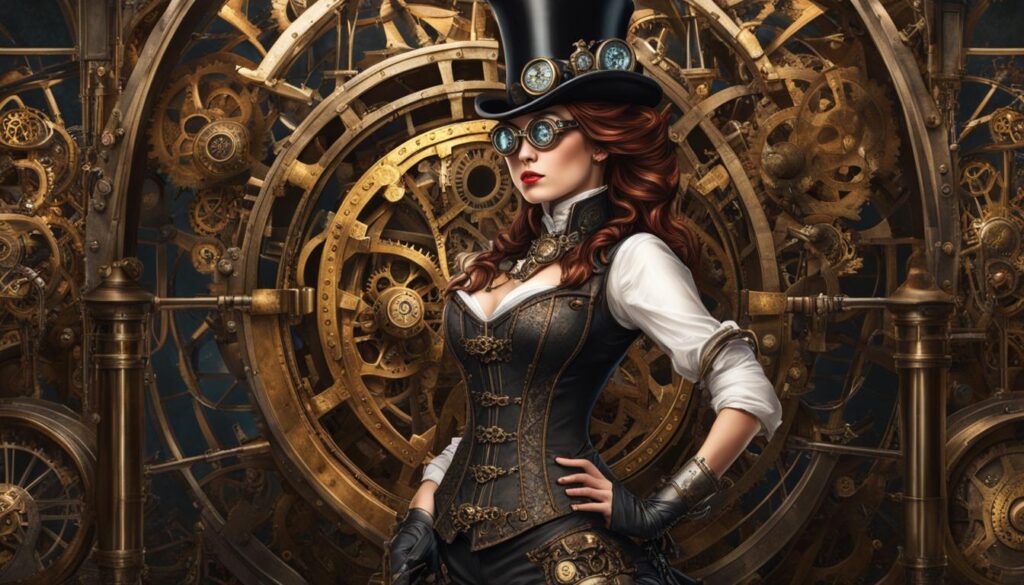
“Steampunk is an artful blend of history, ingenuity, and imagination. It challenges the conventions of traditional storytelling and invites readers to embark on thrilling adventures through vibrant, steam-powered worlds.” – Unknown
Conclusion
Steampunk has embarked on a remarkable literary journey, leaving an indelible impact on modern literature. From its humble origins in the works of iconic authors like Jules Verne and H. G. Wells to its vibrant evolution as a subculture, steampunk has carved its place in literary history. This genre’s unique blend of history and speculative technology has not only captivated readers but also inspired a community of passionate enthusiasts.
Steampunk’s literary impact is undeniable, with notable authors like William Gibson, China Miéville, and Cherie Priest contributing to its rich canon. Their works have seamlessly blended historical context with imaginative inventions, creating narratives that transport readers to intriguing alternate worlds. Steampunk’s influence extends far beyond literature itself, permeating fashion, art, and music, making it a cultural phenomenon that continues to inspire creativity.
As steampunk continues to evolve and inspire, its influence on modern literature remains significant. It has challenged traditional narratives, pushing the boundaries of what is possible and igniting readers’ imaginations. Steampunk’s journey is far from over, and its place in the literary canon is secure, serving as a testament to the enduring power of this whimsical and thought-provoking genre.
FAQ
What is steampunk’s contribution to literature?
Steampunk has made a significant impact on literary history, shaping narratives with its wit, mysteries, and contraptions.
How has steampunk evolved from its origins?
Steampunk has grown from a visual iconography recognized in film, television, and music videos to a vast genre of literature, encompassing various subgenres and expanding into other art forms.
Who are some notable authors in the steampunk genre?
William Gibson and China Miéville are notable authors who have contributed to steampunk’s literary canon.
What are the key elements of steampunk aesthetics and themes?
Steampunk’s distinctive visual style is heavily influenced by the Victorian era, featuring elements such as brass, gears, leather, and steam-powered machinery. Its themes often explore alternate history, societal critique, and the intersection of technology and humanity.
How has steampunk influenced modern literature?
Steampunk literature has made significant contributions to the genre, blending historical contexts with speculative or adapted technologies to create immersive narratives that captivate readers.
How has steampunk extended beyond literature?
Steampunk has evolved into a form of protest and a subculture, embracing DIY craft, alternative history, and exploring multicultural and postcolonial perspectives. It has inspired fashion, art, and music while advocating for creativity, craftsmanship, and inclusivity.
What is the process of writing steampunk?
Writing steampunk requires imagination, historical research, and attention to detail. Authors must thoroughly research the Victorian era or an alternative version of it, focus on world-building, and create intricate narratives that combine history, steam technology, politics, and their unique spin on the genre.
What is the impact of steampunk on literature?
Steampunk has solidified its place in literary history, influencing and transforming literature. It has left an indelible mark on modern literature and has been embraced by a community of enthusiasts who appreciate its unique blend of history and speculative technology.

